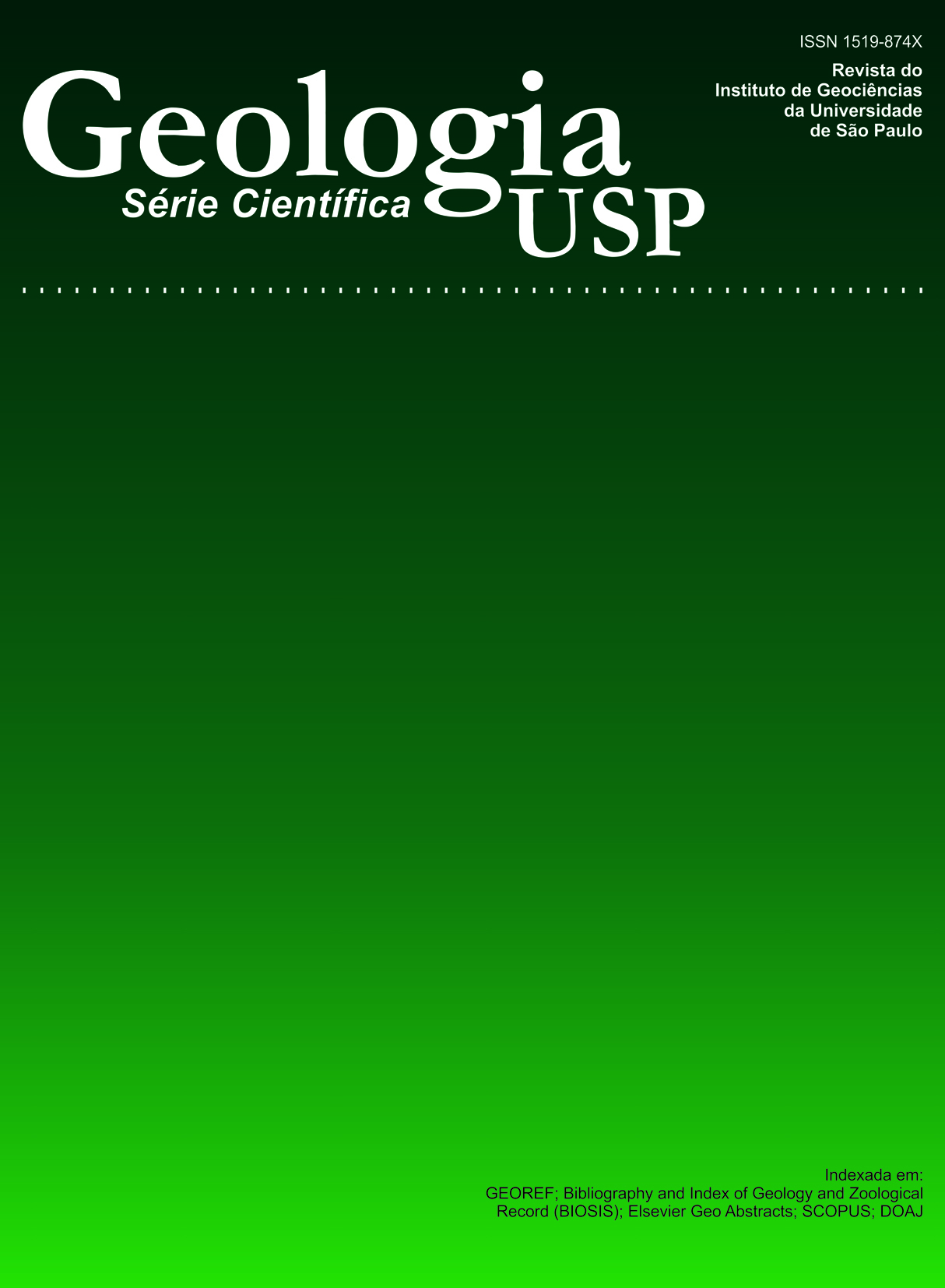Geocronologia Pb/Pb de zircões detríticos e análise estratigráfica das coberturas sedimentares proterozóicas do Sudoeste do Cráton Amazônico
DOI:
https://doi.org/10.5327/S1519-874X2003000100009Keywords:
Proterozoic covers, Amazon Craton, Pb/Pb geochronology, sedimentary environments, sequence stratigraphyAbstract
The stratigraphic analysis and radiometric data obtained by the Pb/Pb evaporation method on detrital zircons from Proterozoic sedimentary covers of the southwestern Amazon Craton led to the recognition of two major depositional sequences bounded by a regional unconformity across this entire cratonic segment. The older one, the Beneficente Sequence, fills the Cachimbo Basin and comprises a basal coarse clastic alluvial unit (Terrigenous Unit), with its source areas in the Archean Central Amazonia Province and the Teles Pires Paleoproterozoic Volcanics. An extensional intracontinental rift system context is envisaged for its deposition. This unit is conformably followed by a shallow epeiric marine incursion over the entire SW part of the craton, that deposited stromatolitic limestones, dolomites, marls, siltstones and black shales (Clastic-Chemical Unit). The lithologies and sedimentary structures of this package suggest a shallow tropical sea, with waves and storms as the dominant depositional agents. The maximum depositional age of this sequence is constrained by the younger 1.74 Ga Pb/Pb age of detrital zircons studied from its basal conglomerates. At the southern border of Cachimbo Basin the Beneficente strata are inclined 35° to south and are overlain by flat-lying siliciclastic beds of Dardanelos Sequence, containing pebles of silicified carbonates, derived from the erosion of the topmost beds of Beneficente Sequence. Nevertheless, the Dardanelos Sequence fills mainly the Caiabis/Aripuaña Basin and the proterozoic basins of Rondonia, Mato Grosso and Bolívia (Guajará Mirim, Aguapeí and Sunsas covers). In the Caiabis/Aripuanã basin, the sequence consists of coarse alluvial gravels and sands derived predominantly from sedimentary sources and deposited in braided river systems with associated widespread eolian sand dunes and shallow marine (sandy tempestites) incursions. The WSW dominant fluvial palaeocurrent direction, indicate the existence of a westward continental margin at the time of deposition. Pb/Pb ages derived from detrital zircons in basal conglomerates constrain the maximum age of deposition to ca. 1.4 Ga. The Aguapeí Group crops out extensively in southwestern Mato Grosso, northwestern Mato Grosso do Sul and eastern Bolívia and consists of a transgressive-regressive sequence filling an intracontinental rift of complex geologic evolution. Detrital zircons separated from basal conglomerates yield an age younger than 1.35 Ga, as the maximum age for the beginning of deposition. Radiometric and geologic data point to at least two major Proterozoic sedimentary covers, the Beneficente and Dardanelos depositional sequences, overlaying the southwestern Amazon Craton, resulting from crustal stretching and rifting between 1.7-1.3 Ga and 1.3-1.0 Ga.Downloads
Download data is not yet available.
Downloads
Published
2003-08-01
Issue
Section
Articles
License
Authors who publish in this journal shall comply with the following terms:
- Authors keep their copyright and grant to Geologia USP: Série Científica the right of first publication, with the paper under the Creative Commons BY-NC-SA license (summary of the license: https://creativecommons.org/licenses/by-nc-sa/4.0 | full text of the license: https://creativecommons.org/licenses/by-nc-sa/4.0/legalcode) that allows the non-commercial sharing of the paper and granting the proper copyrights of the first publication in this journal.
- Authors are authorized to take additional contracts separately, for non-exclusive distribution of the version of the paper published in this journal (publish in institutional repository or as a book chapter), granting the proper copyrights of first publication in this journal.
- Authors are allowed and encouraged to publish and distribute their paper online (in institutional repositories or their personal page) at any point before or during the editorial process, since this can generate productive changes as well as increase the impact and citation of the published paper (See The effect of Open Access and downloads on citation impact).
How to Cite
Leite, J. A. D., & Saes, G. S. (2003). Geocronologia Pb/Pb de zircões detríticos e análise estratigráfica das coberturas sedimentares proterozóicas do Sudoeste do Cráton Amazônico . Geologia USP. Série Científica, 3, 113-127. https://doi.org/10.5327/S1519-874X2003000100009





